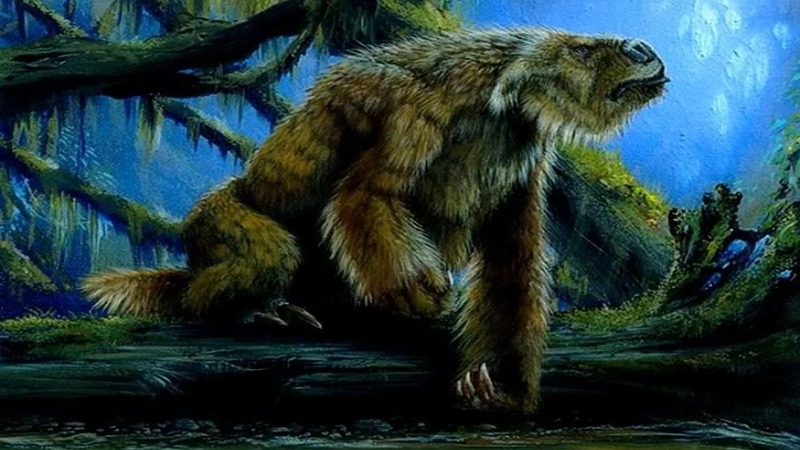Deep in the heart of the Amazon rainforest, tales of a mysterious creature known as the Mapinguari have long captivated locals and cryptid enthusiasts alike. Described as a towering, ape-like beast with a single eye, backward-facing feet, and a fearsome howl, the Mapinguari is said to roam the dense jungle, causing both fear and fascination. Is this creature fact or folklore?
Evidence in Favor of the Mapinguari’s Existence
Eyewitness Accounts
- Numerous indigenous tribes and local inhabitants have reported encounters with the Mapinguari. These accounts, while varied, consistently describe a large, bipedal creature with distinctive features such as a single eye and backward-facing feet.
- Such stories have been passed down through generations, lending a sense of historical continuity and cultural significance to the Mapinguari legend.
Biological Plausibility
- Some researchers suggest that the Mapinguari could be a surviving ground sloth, specifically a Megatherium, which went extinct around 10,000 years ago. The Amazon rainforest, with its vast and unexplored territories, could conceivably harbor such a creature, hidden from modern scientific scrutiny.
- Cryptozoologists argue that the dense and largely inaccessible regions of the Amazon provide ample cover for a large, elusive animal to exist without being discovered by conventional means.
Physical Evidence
- Reports of large, unexplained footprints have occasionally surfaced, though these are often difficult to verify due to the dense and challenging terrain of the Amazon.
- Some claim to have found claw marks on trees and unusual scat that do not match known wildlife in the region.
Evidence Against the Mapinguari’s Existence
Lack of Scientific Evidence
- Despite extensive expeditions and research into the Amazon rainforest, no definitive physical evidence of the Mapinguari has been found. No bones, carcasses, or credible DNA samples have been discovered to substantiate claims of its existence.
- The scientific community largely regards the Mapinguari as a myth, attributing sightings to the misidentification of known animals or the effects of isolation and superstition among local populations.
Cultural and Psychological Factors
- Anthropologists suggest that the Mapinguari legend may be rooted in cultural folklore and traditional stories meant to instill caution and respect for the dangerous and mysterious rainforest environment.
- Fear of the unknown and the human tendency to create narratives around unexplained phenomena could explain the persistence of the Mapinguari myth without requiring an actual creature to exist.
Alternative Explanations
- Many supposed sightings and evidence can be attributed to other animals native to the Amazon. For example, the Giant Anteater, with its large size and unusual appearance, could easily be mistaken for a cryptid in poor visibility.
- Natural sounds and shadows in the dense jungle can also play tricks on the mind, leading to exaggerated reports and reinforcing the legend of the Mapinguari.
The Mapinguari remains one of the most intriguing cryptids of the Amazon rainforest. While the evidence in favor of its existence primarily relies on anecdotal accounts and the remote possibility of a surviving prehistoric species, the lack of concrete scientific proof and alternative explanations cast significant doubt on its reality. Whether a mythical guardian of the jungle or an undiscovered relic of the past, the Mapinguari continues to spark curiosity and debate, embodying the timeless allure of the unknown.
Is the Mapinguari real or just a legend? Could it be an as-yet unidentified species? What do you think? Share your thoughts in the comments below!
